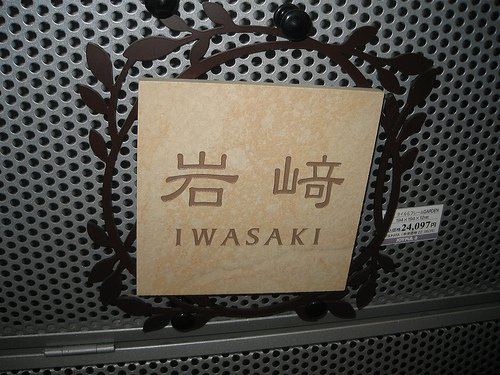With Japan’s population having already peaked, the country is undergoing a national debate about how to raise its brith rate. There are a lot of reasons why Japan’s birthrate is so low, at just 1.38 children born per couple, including the pressures of urban society and those “rabbit hutch” apartments in Tokyo, a less-than-optimal environment for kids, the general march of social attitudes and of course, the costs involved with raising a child. Add to these factors the reality that people no longer need to have eight kids to ensure that some will survive to take care of them in their old age, and you’ve got a crisis. The ruling LDP is suggesting paying all birth-related costs for couples and giving an additional $50-per-child monthly stipend to families. These might be good ideas, but I have another one: an American-style day-care system. The time-honored way for working parents to raise a child in Japan is to have Obaachan (grandmother) babysit during the day, since many families live with their parents, or else put your child in your city’s municipally-run pre-school, if you can get in. Adding an American-style private day-care system to the country would give people more choices about how and when to have children. Although U.S. day-care system might not be perfect, it’s still better than the nonexistent system here.
The Japanese have a great interest in sports, especially in international events where they can compete on the world stage and show their best to other nations. With Shizuka Arakawa’s gold medal in Torino Olympics, figure skating has become hugely popular, and many Japanese skaters are featured on TV almost daily. Leading the pack is the charming and talented Mao Asada (no relation to the former Chinese leader or to a Carne Asada Burrito), who at just 15 has already won a huge number of accoladaes for herself. In yesterday’s Japan Open 2006 skating event she aced her program, helping put Japan over the top to beat out Team Europe and Team North America. Competing on the ice since the age of 5, she and her older sister Mai (who is also an accomplished skater) are the current darlings of the Japanese media. In addition to her cute face and incredibly graceful style on the ice, she has oversized ears, which (according to my Japanese wife) means that she’ll be very successful and wealthy in her life, since money is meant to pour into large ears, or something like that.
As with most other countries, cell phones have become ubiquitous in Japan, and more than 90% of high school students carry a “keitai” (portable phone) everywhere they go, with even higher rates of adoption in other age groups. The market has gotten so saturated that Japan’s major cellphone companies have turned to elementary school-age children as the next potential area for growth. The idea of kids carrying phones around with them takes some getting used to, of course, but companies like KDDI have done a good job thinking up features that are important to parents, such as GPS sensors that let parents find where their children are by viewing a website, or a function that sends a parent an IM when their child reaches a preset destination, like home. A big reason for the popularity of phones by younger students is related to Japan’s group-oriented culture — there’s nothing worse than being nakama-hazure (na-kah-mah ha-zoo-rey), excluded from the larger group by, say, being the only one unable to exchange emails with friends. One side effect of Japan’s widespread use of keitai phones is that people think of email or instant messages as something you do with a phone rather than with a computer. I wonder if this will have have a long-range effect on Japan’s technical skills down the road?
Manga is a big part of Japan’s culture, and J-List carries the popular Comic AG, the leading English-language magazine of “H” manga. Each issue is a treat, with 80 pages of English-translated manga, faithfully produced from the artist’s original pages (not scanned from the printed Japanese editions, like many translated works), and will full detail on all art. Each issue is jut $4.99, perhaps the best bargain in the manga world. In addition to offering regular subscriptions to AG, you can buy blocks of back issues at a special price with our AGSET offering. We’ve updated the AGSET with the next five issues of AG, making it easy to pick up the back issues you need and save.
A bunch of old stuff, some of it pretty cool.















